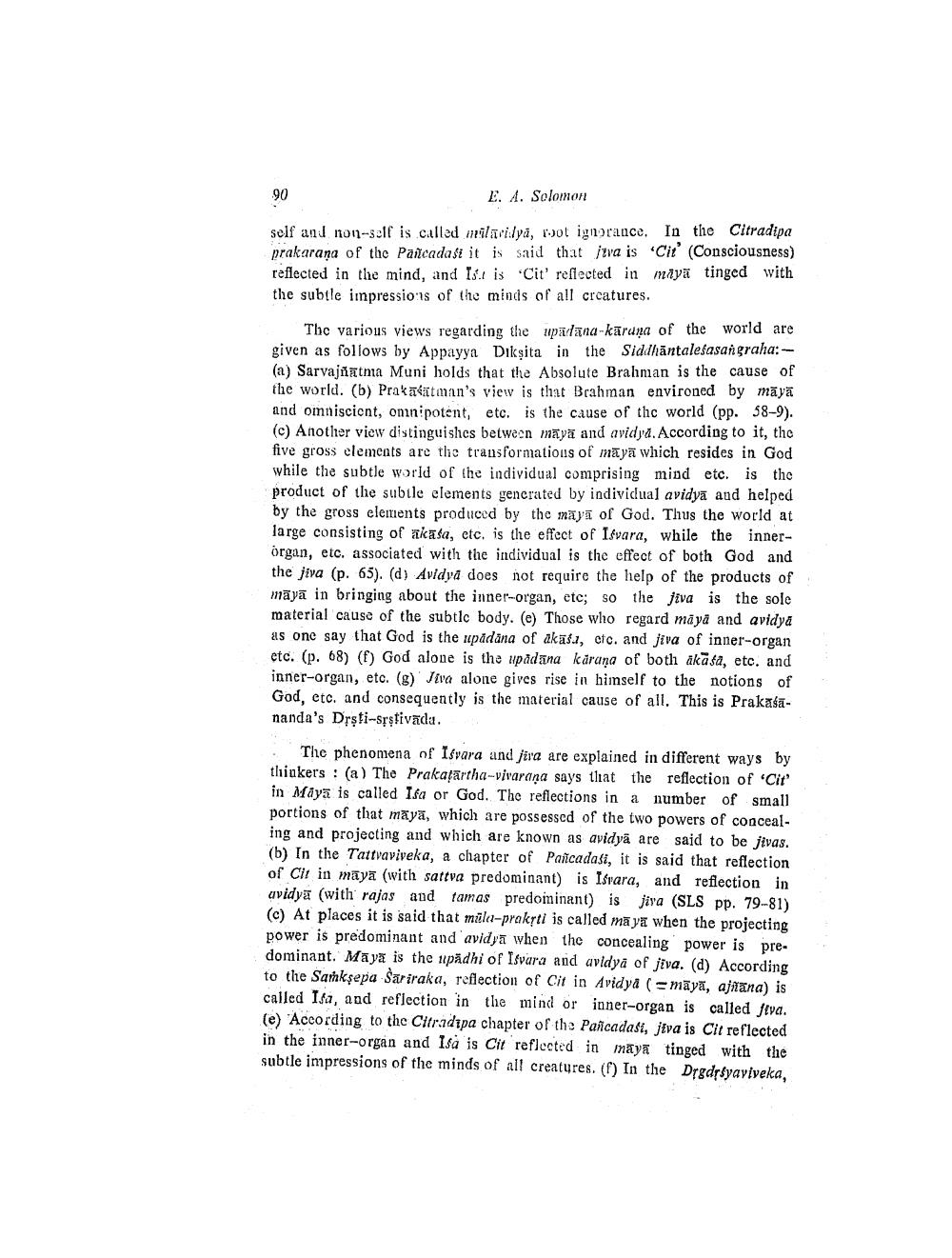________________
E. A. Solomon
self and 11011-3elf is called milavi:lyā, tot ignorance. In the Citradipa prakarana of the Pascadast it is said that juva is 'Cit' (Consciousness) reflected in the mind, and I is 'Cit' reflected in maya tinged with the subtle impressio is of the minds of all creatures.
The various views regarding the upadana-kāruna of the world are given as follows by Appayya Diksita in the Siddhāntalesasangraha:(a) Sarvajñithia Muni holds that the Absolute Brahman is the cause of the world. (b) Praka atman's view is that Brahman environed by māyā and omniscicnt, omnipotent, etc. is the cause of the world (pp. 58-9). (c) Another view distinguishes between mayı and avidya. According to it, the five gross elements are the transformations of māyā which resides in God while the subtle world of the individual comprising mind etc. is the product of the subtle elements generated by individual avidyā aud helped by the gross elements produced by the way of God. Thus the world at large consisting of akasa, etc. is the effect of Isvara, while the innerorgan, etc. associated with the individual is the effect of both God and the jiva (p. 65). (d) Avidya does not require the help of the products of maya in bringing about the inner-organ, etc; so the jiva is the sole material cause of the subtle body. (e) Those who regard maya and avidya as one say that God is the upadana of akas., etc. and fiva of inner-organ etc. (p. 68) (f) God alone is the wpadana karana of both akafa, etc. and inner-organ, etc. (g) Jiva alone gives rise in himself to the notions of God, etc. and consequently is the material cause of all. This is Prakasananda's Drşti-srstivāda.
The phenomena of Isvara and jira are explained in different ways by thinkers : (a) The Prakatartha-vivarana says that the reflection of 'Cit' in Māya is called Ifa or God. The reflections in a number of small portions of that mayā, which are possessed of the two powers of concealing and projecting and which are known as avidyā are said to be jivas. (b) In the Tattvaviveka, a chapter of Paicadasi, it is said that reflection of Cit in maya (with sattva predominant) is Israra, and reflection in avidya (with rajas and tamas predominant) is jiva (SLS pp. 79-81) (c) At places it is said that mila-prakti is called māya when the projecting power is predominant and avidya when the concealing power is predominant. Maya is the spädhi of Isvara and avidya of jiva. (d) According to the Sanksepa Sariraka, reflection of Cit in Avidya ( = māyā, ajñana) is called Isa, and reflection in the mind or inner-organ is called stva. (e) 'According to the Citradipa chapter of the Paiicadasi, jeva is Cit reflected in the inner-organ and Isa is Cit reflected in maya tinged with the subtle impressions of the minds of all creatures. (f) In the Drgdryaviveka,




